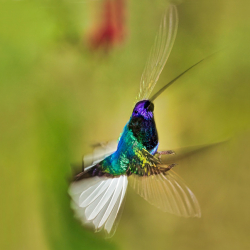Home > Topics > Printing > Papers & Media > Printing on Japanese Washi
Printing on Japanese Washi
-
AuthorTopic: Printing on Japanese Washi Read 1546 Times
-
Papers & Mediaon: November 1, 2020 at 9:03 pm
I have become interested in printing digital images on Japanese Washi.
Other than Kevin and likely Mark, is there anyone else on PXL who has printed on Washi?
If so, is there any interest in sharing one’s experience in printing and exhibiting such prints?
Thanks.
Re: Printing on Japanese WashiReply #1 on: November 9, 2020 at 8:12 amHi Elliot
I was given a sample pack Awagami Inkjet Paper by my paper supplier and then subsequently ordered a pack of A3 to make prints for a local artist. (See top left-hand section of the print.)
The first thing I learned that, more than ever, paper choice and image choice is vital. The paper dictates the image…
The “Bizan Natural (Thick) Hand Made” is, I guess, the paper everyone thinks of – and it is beautiful! The “natural” papers are quite yellow/creamy and it seemed to me that they work best with black & white images better because colours are more influenced by the colour of the paper… I think the print of the tree worked pretty well.
There are “White” papers that will work fine with colour printing but they are similar to most other photo rag-type papers which are much cheaper I would imagine.
The paper that really impressed me was the “Unryu (Thin)”. My wife’s image of the “Levailliant’s Cisticola” worked perfectly with this paper. The scan of the print does not really do the print justice. The whitish lines you see are delicate silvery fibres which enhance the image beautifully.
I made these prints on a Canon iPF 8400 and, for obvious reasons, used the canned profiles.
I still have a few pieces of sample paper left and will try them out on my Piezography printer – I see that they have added some Awagami “curves” (profiles) so that will be interesting.
I’m not sure if that was the kind of information you were looking for?
Regards
William
Re: Printing on Japanese WashiReply #2 on: November 9, 2020 at 9:28 amHi William: My sincere thanks for taking the time to respond and post these lovely images. I will attach some images to a subsequent post later today.
Your succinct analysis as to the “paper dictates the image” is completely correct and as such mirrors similar comments offered by Les Picker, Eric Joseph, and Michael Gordon-all of whom use washi for various images. Similar observations have been offered by a small number of others who use washi in their review of the Moab Moenkopi line of washi.
It has proven difficult to find “amateurs” and hobbyists who use washi and who are willing to share their experiences. I suspect that the lack of “users” reflects in part the fact that prints on washi are in general less dramatic with subdued colors and truncated dynamic range. A very rough analogy might be to consider the completely different appearance of a given print on luster paper vs. the same image printed on a variety of mat papers. A given image printed on washi is less “dramatic” then the same image rendered on various mat papers! Nevertheless, the subtle texture of the paper which is IN the paper and not ON the paper renders certain images in a manner not possible with the same image printed on other papers. As others have opined, images with fog printed on washi in my limited experience far surpass the same images rendered on all other papers.
Another issue with washi ( as briefly discussed earlier with Kevin ) is how to exhibit such images so as to take advantage of the subtle nature of the texture and fibers in each paper. I will have more to say about that subject subsequently.
I have found that images needing a “high ink load” might be better printed on one of the thicker versions of the same paper or as perhaps you have also noted, on a larger piece of the same paper. There can be curling towards the printed side which can be addressed in various manners but which at the same time in smaller prints can be off-putting.
As others with more experience have stated, there are subtle differences in washi from the same “batch” and such differences sheet to sheet in the same envelope can on occasion be frustrating: Prints of the same subject rendered on the same paper on the same day can differ in subtle ways. However, perhaps such differences can be considered part of the artistic process. I do NOT find such differences to be limiting.
I hope that others who might want to try washi and experiment with efforts to render their prints in a completely different and dare I say more “artistic” manner will join us and share their experiences using washi.
More in a subsequent post later today or tomorrow.
And thanks again William!
Elliot
Re: Printing on Japanese WashiReply #5 on: November 11, 2020 at 11:30 pmI sincerely apologize…for some reason the images above were loaded incorrectly and do not illustrate the difference in the prints using ICC profiles.
Elliot
Re: Printing on Japanese WashiReply #6 on: October 9, 2021 at 3:31 amI have a question for anyone who has printed on Hahnemuhle’s Rice paper: In Mark Segal’s review he states: “If you look carefully you can see the slight ribbing pattern in the paper.” This comment is made following the Figure 18 backlit print. I’m wondering if these ribs are as visible when the print is not backlit?
I’m looking for a paper that’s similar in appearance to Moab Moenkopi Unryu, so if this paper has visible ribs when viewed under normal lighting this would be a deal breaker for me.
-
AuthorPosts
- You must be logged in to reply to this topic.


